Darley Park Gateway: Improving Health and Safety Through Communal Space

What We Did
- Space Planning
- Design-Build
- Community Outreach
- Capacity Building
- Research
- Grant Proposals
- Network Building
Partners
- The Darley Park Community Association
- Baltimoreans United In Leadership Development (BUILD)
- The 6th Branch (T6B)
- Parks and People Foundation
- The Waterfront Partnership
- Maryland Institute College of Art (MICA)
Supporters
- Baltimore Office of Promotion and the Arts (BOPA)
- State of Maryland
- Delegate Cory McCray
- City Councilwoman Mary Pat Clarke
- Parks and People Foundation
- Urban Health Institute
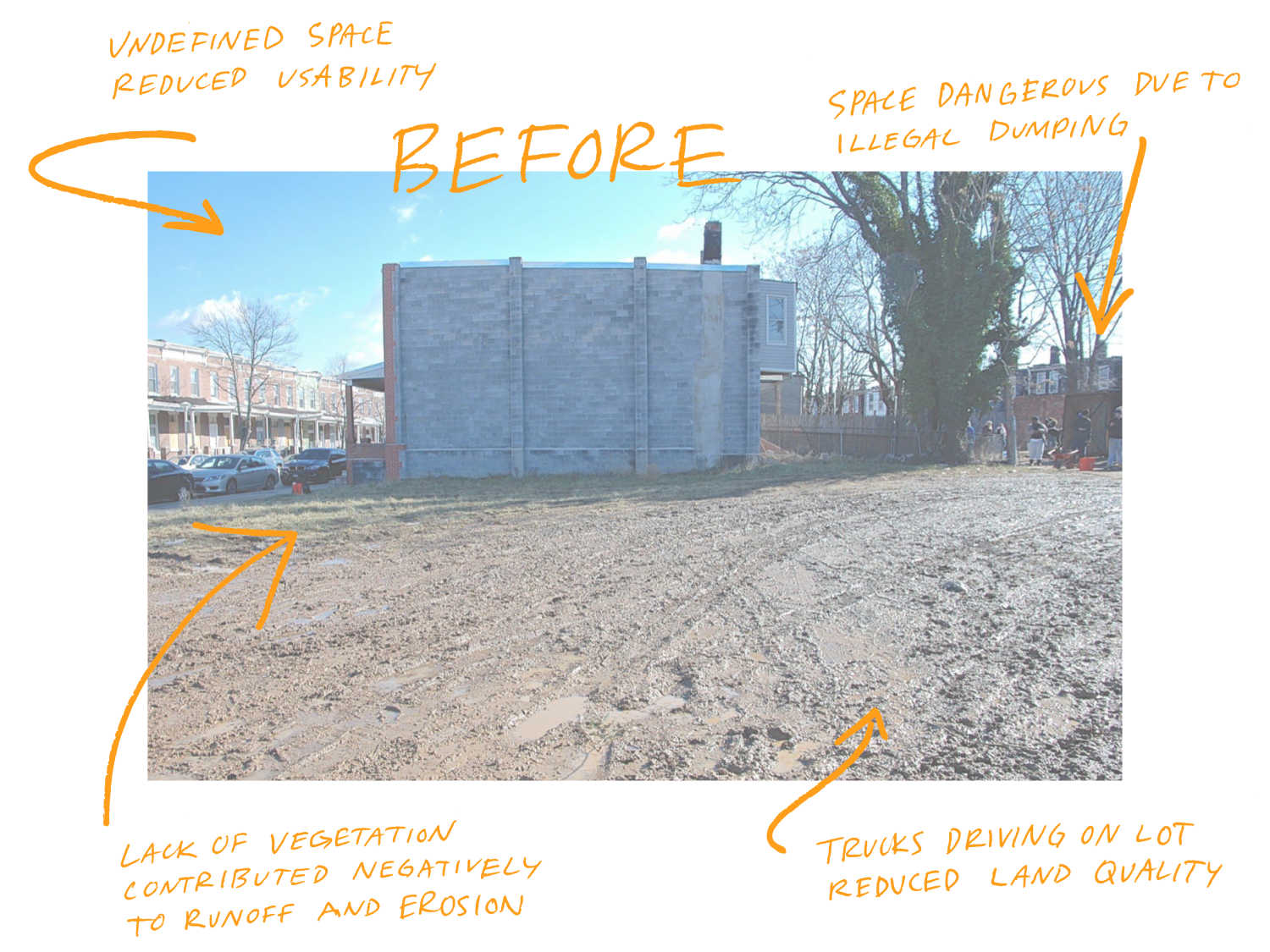
The Challenge: Decrease chronic violence by creating a sanctuary out of neglected space.
Darley Park is 94% African American, and suffers the consequences of racially biased planning policies: 26% of properties are vacant and abandoned, life expectancy is 67 years old compared to 84 in the city’s affluent neighborhoods, and the unemployment rate is 21%. As a result, Darley Park residents experience chronic trauma and violent crime.
Studies show that green space is linked to better mental health, increased community engagement (fostered by caretaking of the space), and improved safety.
The absence of clean, safe, green spaces — and the central presence of a neglected, muddy lot left behind where row homes once stood — was taking a toll on residents.
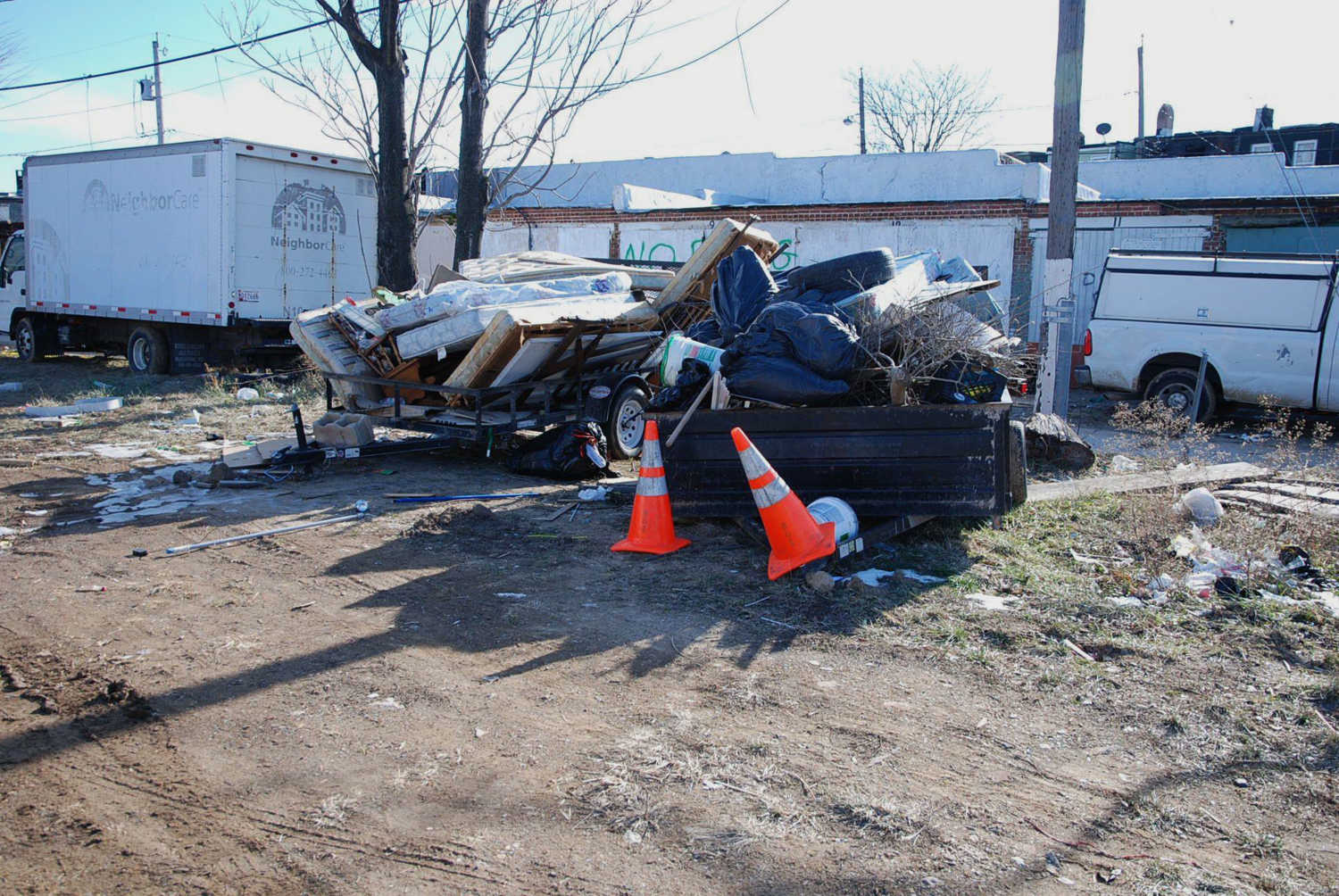
Building Place, Building Network
Before any work could begin to activate the space, the lots needed to be clean and safe. This was a long and arduous process, only possible through the hard work of partners, residents, and volunteers. In 2015, The 6th Branch, a veteran-led nonprofit, organized large, volunteer clean-up days to remove several tons of trash and dangerous debris from the area.
In addition to dumping, the lots’ informal use as a turn-around zone for a trash hauling business was problematic. A relationship was formed between the owners of this business and the community association, in part because improvement was mutually beneficial: By cleaning up the alleys, the trucks were able to access their garage without driving over the lots, which in turn allowed for grass plantings and small build projects.
“It’s important that the community comes outside. That’s the only way you can reclaim spaces.”
— Darley Community Member
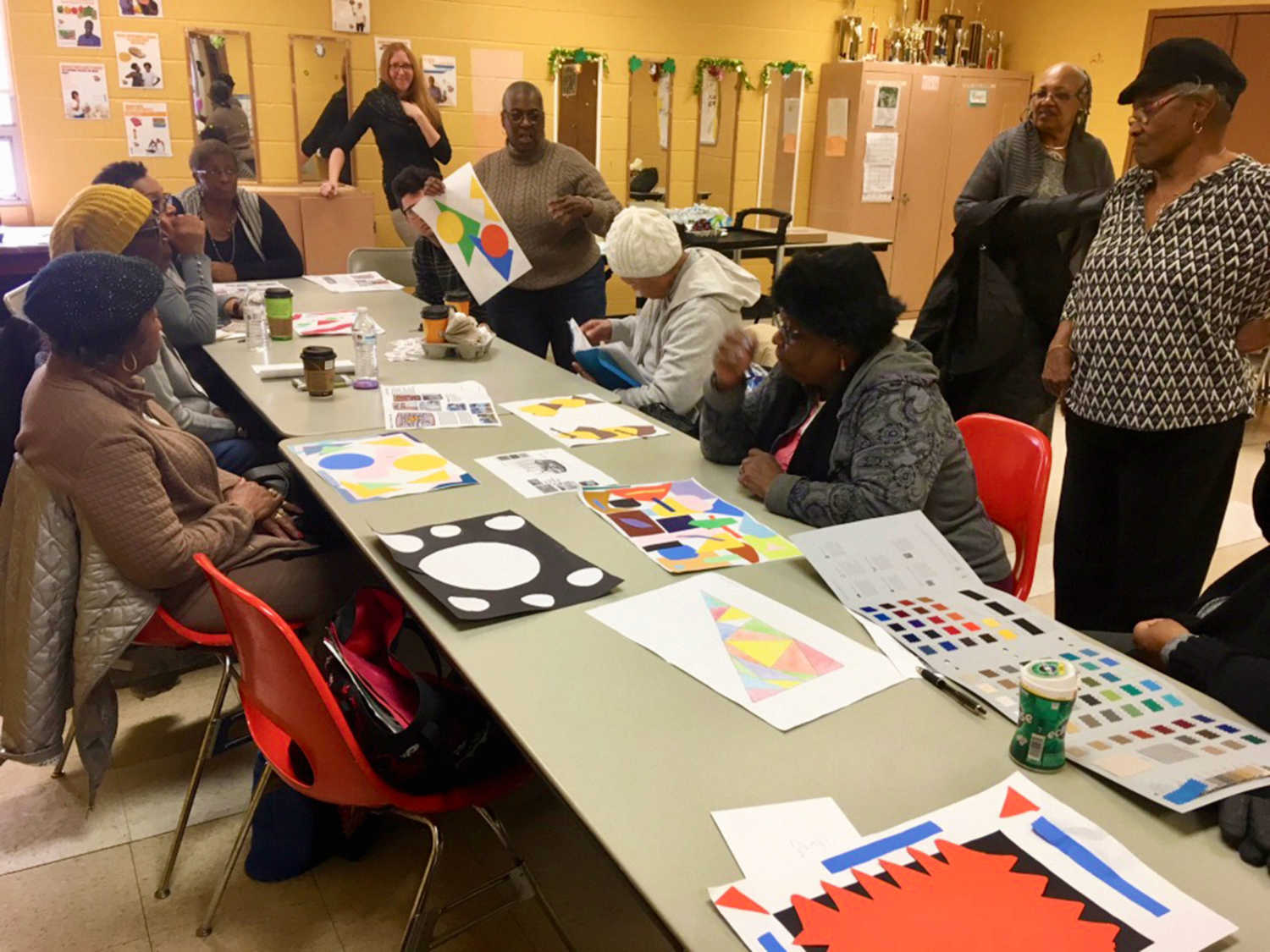
The Vision: A colorful, safe gathering space
From 2015 through 2016, NDC led an initial exploration of community ideas during community engagement meetings and hosted regular hands-on community build days. We developed a conceptual design for the space based on the following community identified priorities:
Feeling of Safety
Lots of Color
Tree Shade and Grass
Playspace
Multigenerational Use
Performance Space
Accessible Paths
“Our goal is to make the lots a safe and welcoming space. I hope that in 5 years time, the park will be a safe place for the community, somewhere where a senior could sit and enjoy the outside or could read, kids could play.”
— Pauline Charles, Darley Park Community Association President
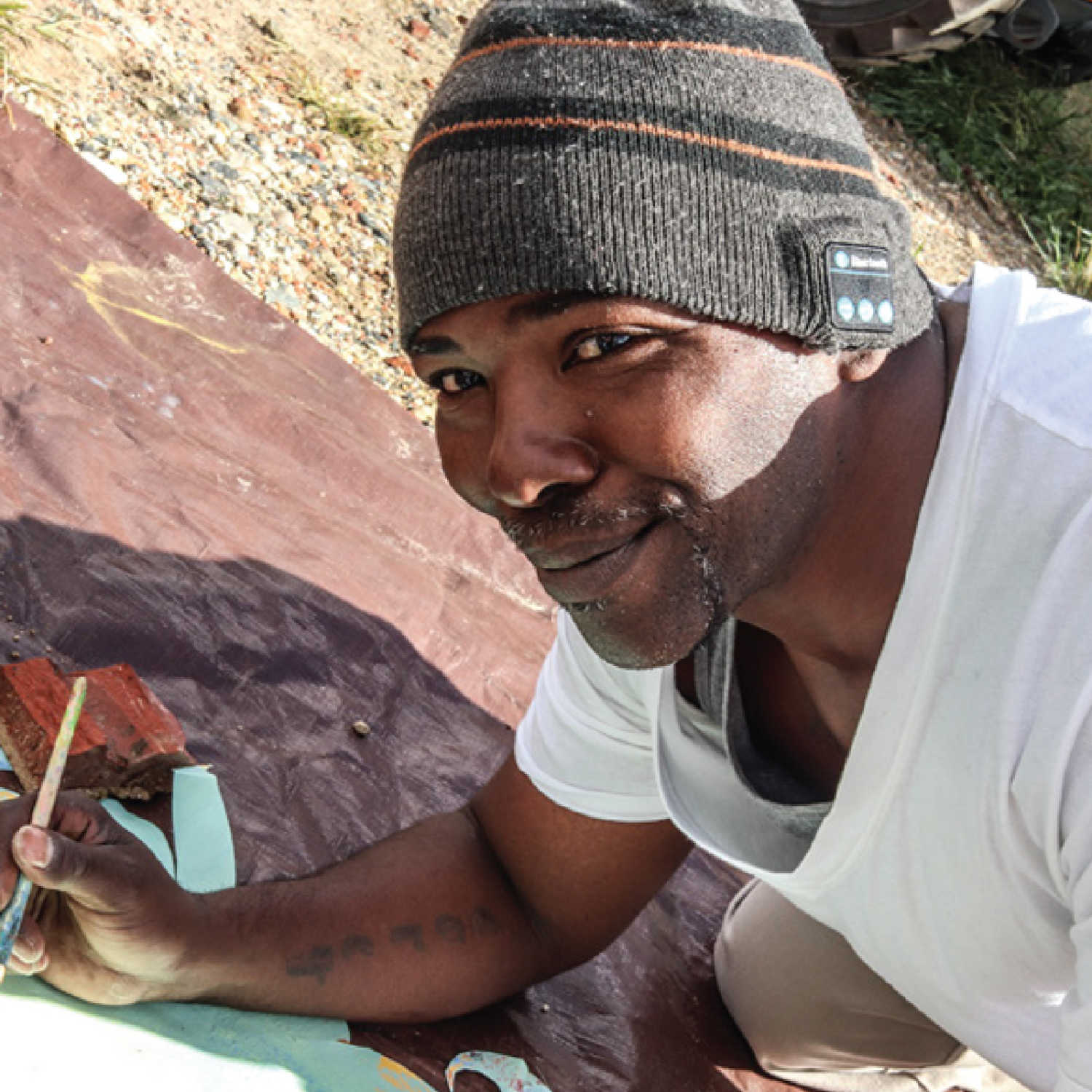
The Plan: Design-build prototypes bring investment
Our NDC team collaborated with community members and design experts and came up with several ideas for simple, low-cost interventions to activate the space: planter boxes, trees, and easy-to-build play structures. Simple improvements can be prototypes for higher-cost, long-term construction and help to attract investment. Artist Whitney Frazier worked with the community and with her students at MICA to create a mural adjacent to the play area, bringing vibrant color to the previously dull, grey end wall.
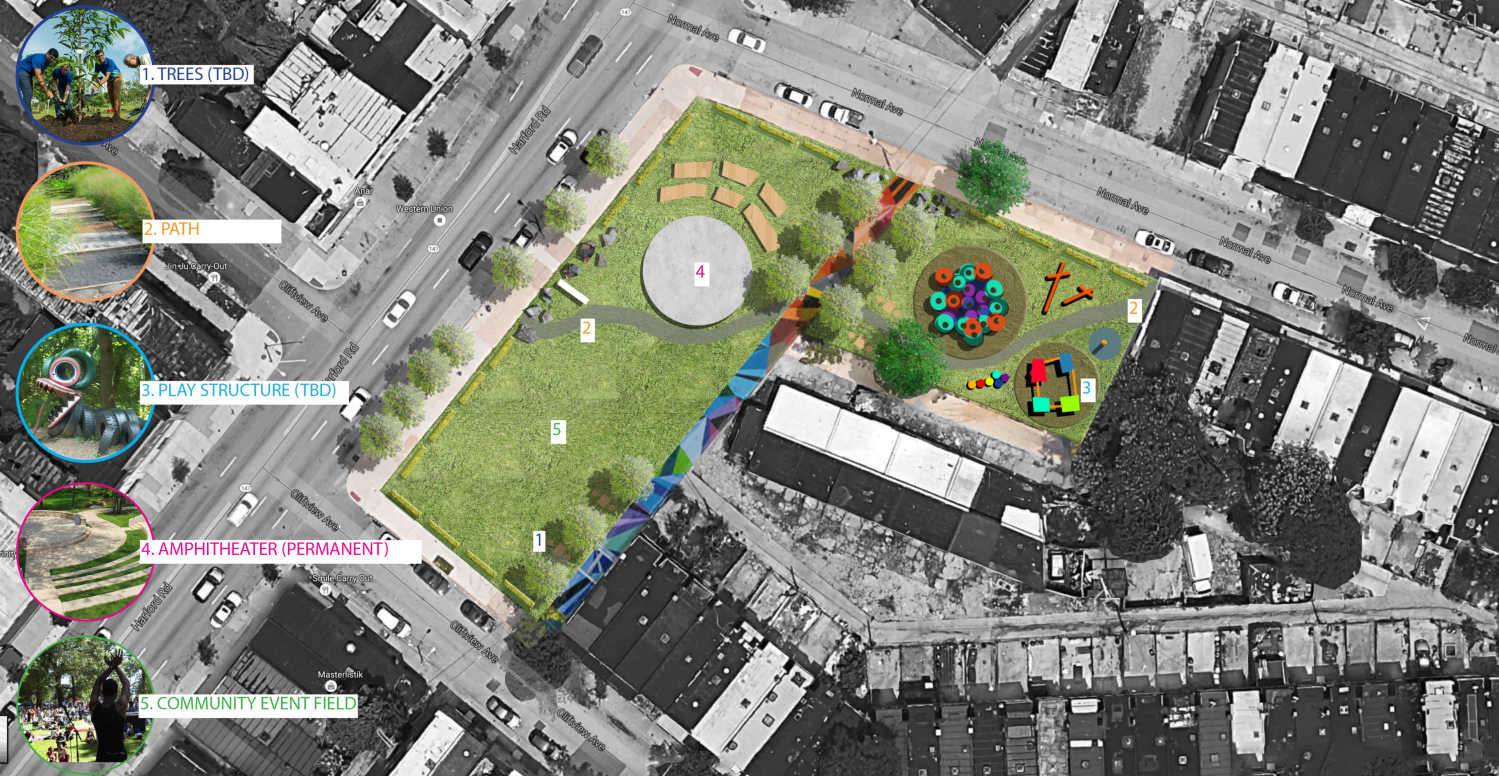
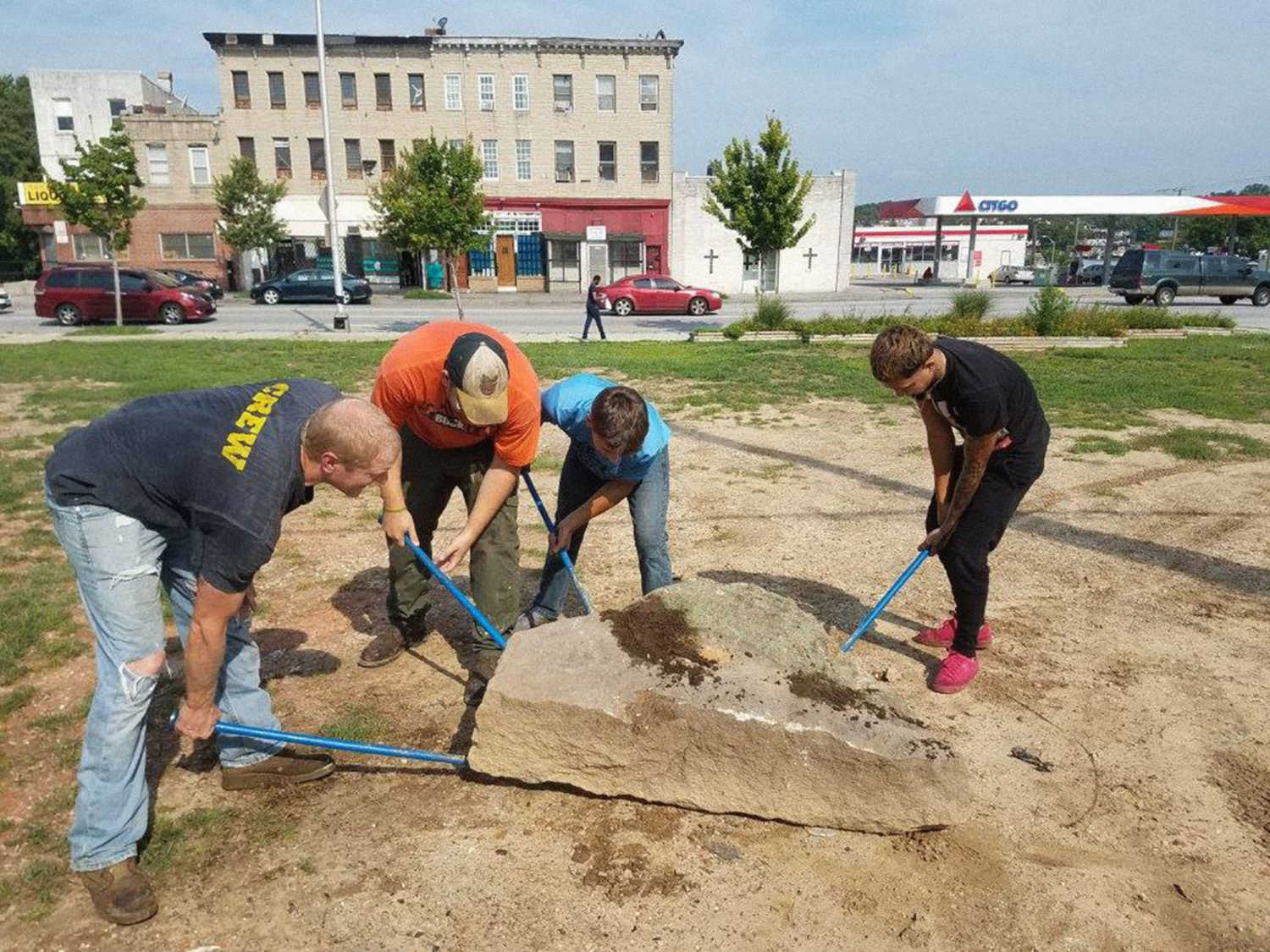
The Build: Starting with small measures to define the space
First, the park boundary was defined by placing boulders and planter boxes and planting trees. Once this basic space delineation—which provides both physical and mental protection—was in place, we began fun building projects : a swing set, a tire climber, a tetherball. Next, the team of stakeholders secured $30,000 from Baltimore Office of Promotion and the Arts to build a multi-use performance stage.

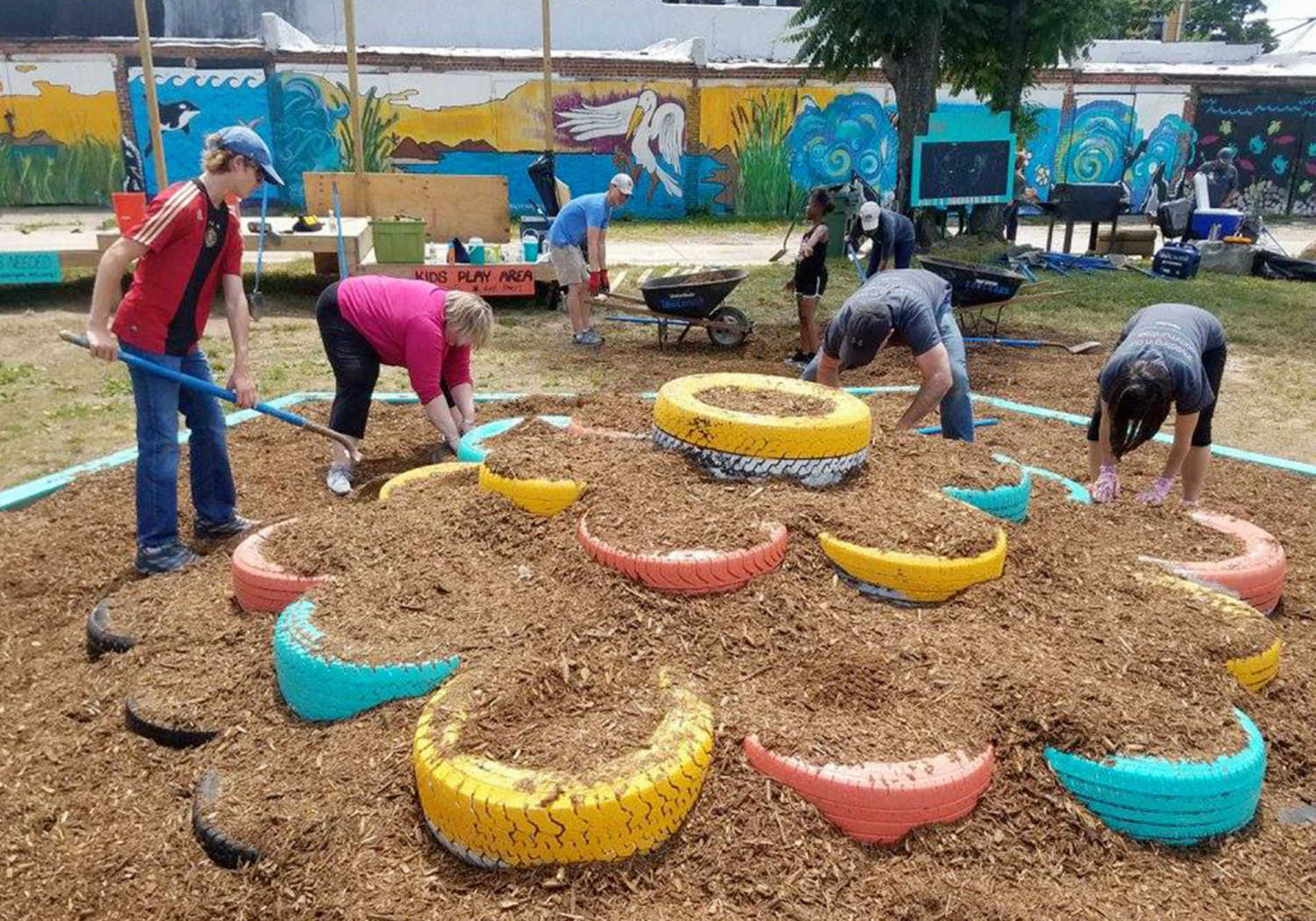


“Over 3,645 volunteer hours (valued at $85,876.20) have gone into this work since January 2015. What was once a dumping ground and truck parking area is now full of life.”
— Scott Goldman, The 6th Branch Executive Director

Key successes
The stage
From memorial services to informal zumba classes to a visual-musical art event, gatherings are now possible, which strengthen resident relationships.
Playground
The play structures exemplify the power of small interventions. Things taken for granted, such as grass or a set of swings, can have a profoundly positive effect on families’ daily lives.
Murals
Through collaborations with artist Whitney Frazier, the community was able to define their own space (the murals include poetry and art by residents) and create a colorful, inviting ‘gateway’ into the neighborhood.
Greening
A space that was once devoid of life now includes high-quality sod and grass treatments, diverse flowering hardwood trees, and annual plantings of local wildflowers—a boon for both beauty and ecology.
Key Investments
The total estimated value of the services and resources secured under this project through NDC’s partnership, not including NDC staff time, is over $55,210.
$10,000 grant from the Urban Health Institute to support community-designed park elements (swings, benches, boulders, and a mural valued at $15,000 via partnership with MICA and artist Whitney Frazier)
$30,000 transformative art prize from Baltimore Office of Promotion and the Arts to build the circle stage, create community art quilts, and support the TT The Artist Concert at Neighborhood Lights/ Light City
$13,000 grant from the Baltimore Office of Promotion and the Arts for the second “Gateway” mural featuring resident Mr. Abdullah Moanay’s poetry
$2210 in donated professional services by architect Jimmy Leonard to develop the concept design plans that were used to secure a $50,000 bond bill.
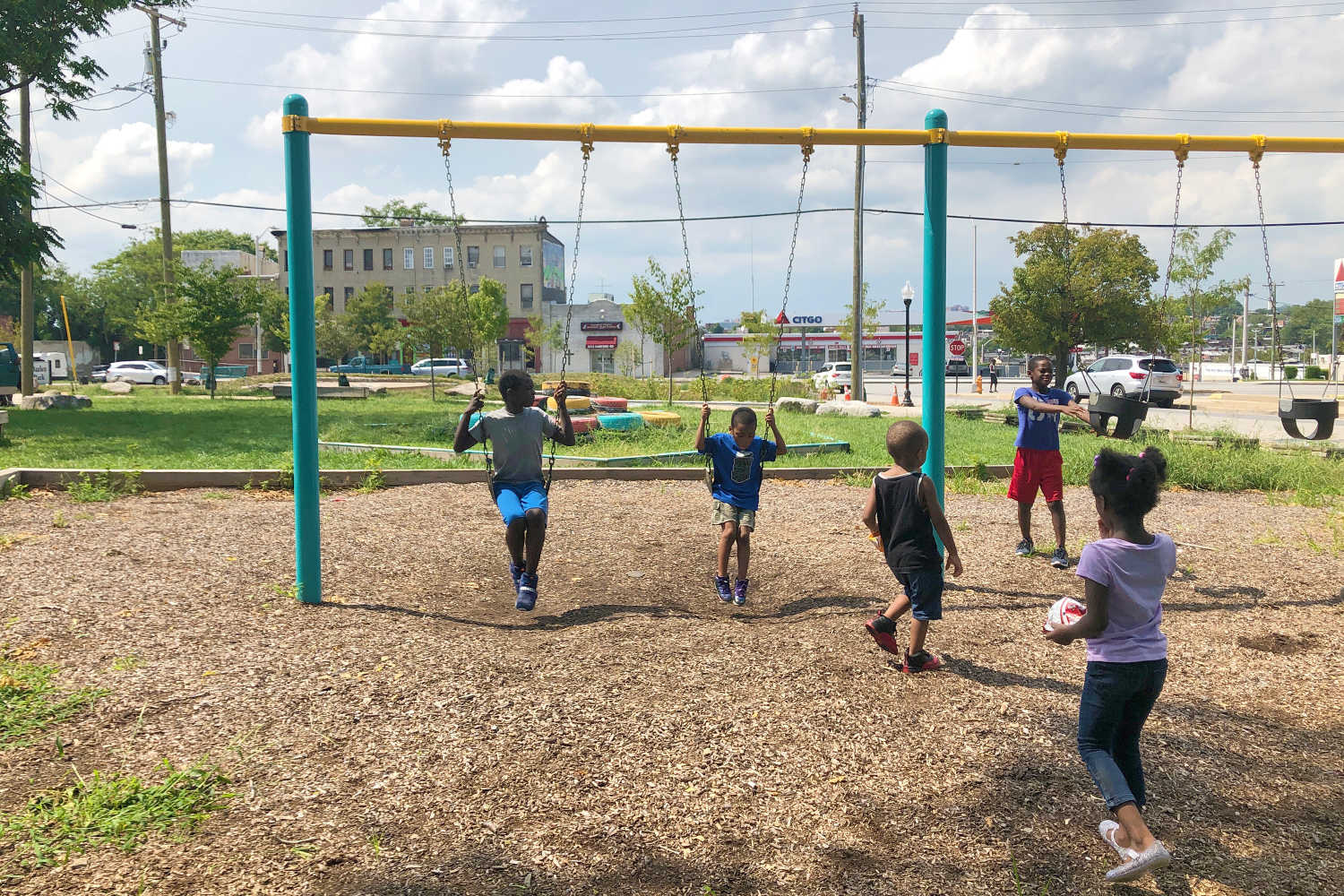

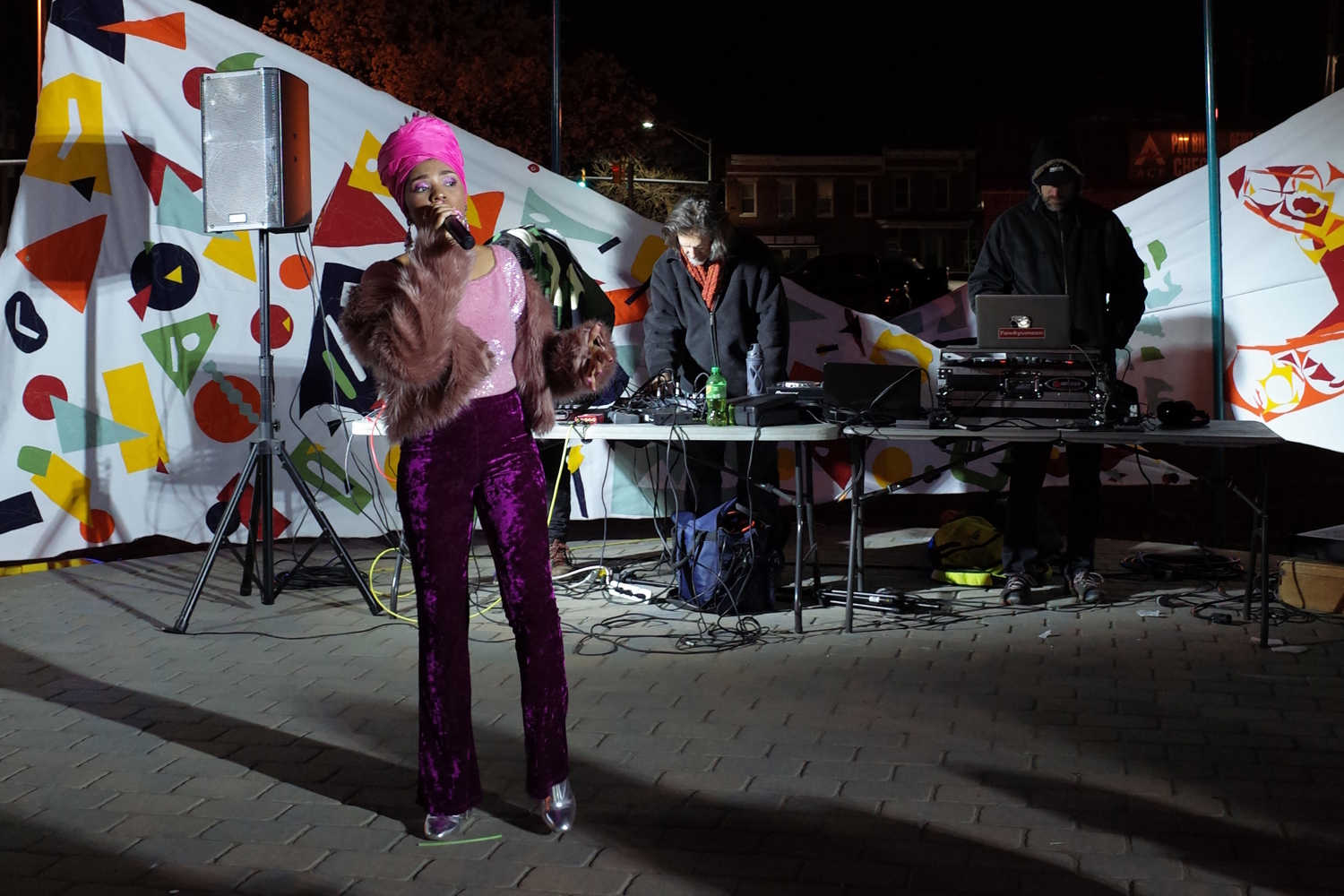
Studying Mental Health
Darley Park is part of a study to understand how green space can impact mental health in communities experiencing violence and trauma. Dr. Carol Vidal of Johns Hopkins University has worked with Darley Park team members to study the impacts of the park. Briony Hynson of NDC presented their work at the Active Living Research Conference in Banff, Canada.
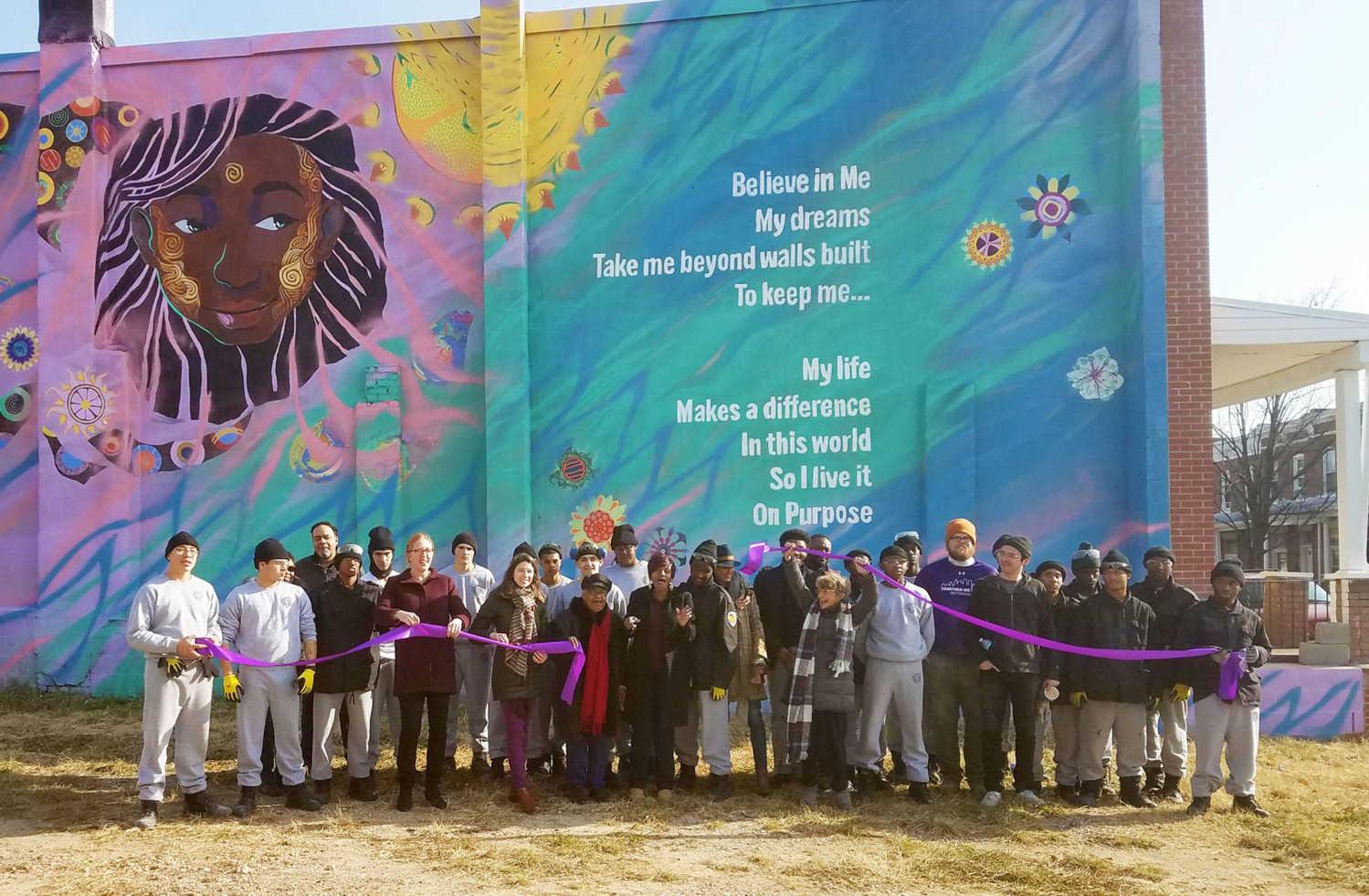
The Future
NDC has partnered with Gwen Brown, a leader at BUILD, and Pauline Charles, the leader of the community association, to grow the network of partners around the park. Through the foundation of a park steering committee, we’ve increased investment from both municipal and foundation funders, such as the Parks and People Foundation. Since joining the efforts in 2016, they have secured over $300,000 in renovation funds to continue to build the park towards the community’s long held vision. Phase one was completed in Summer 2019, including tree plantings, stormwater retention planters, professional landscaping, and high-quality seating. Phase Two will include updates to the play area, with new equipment.